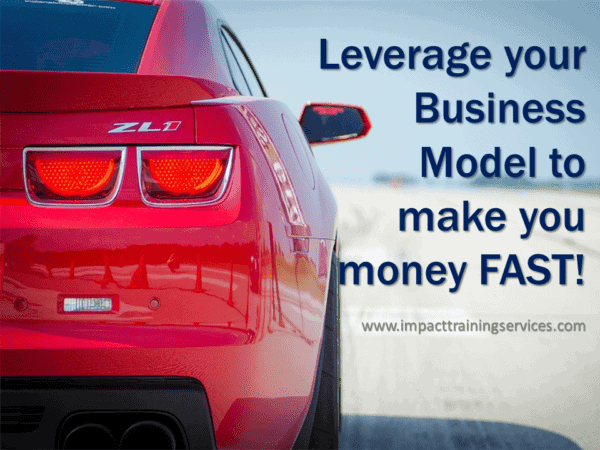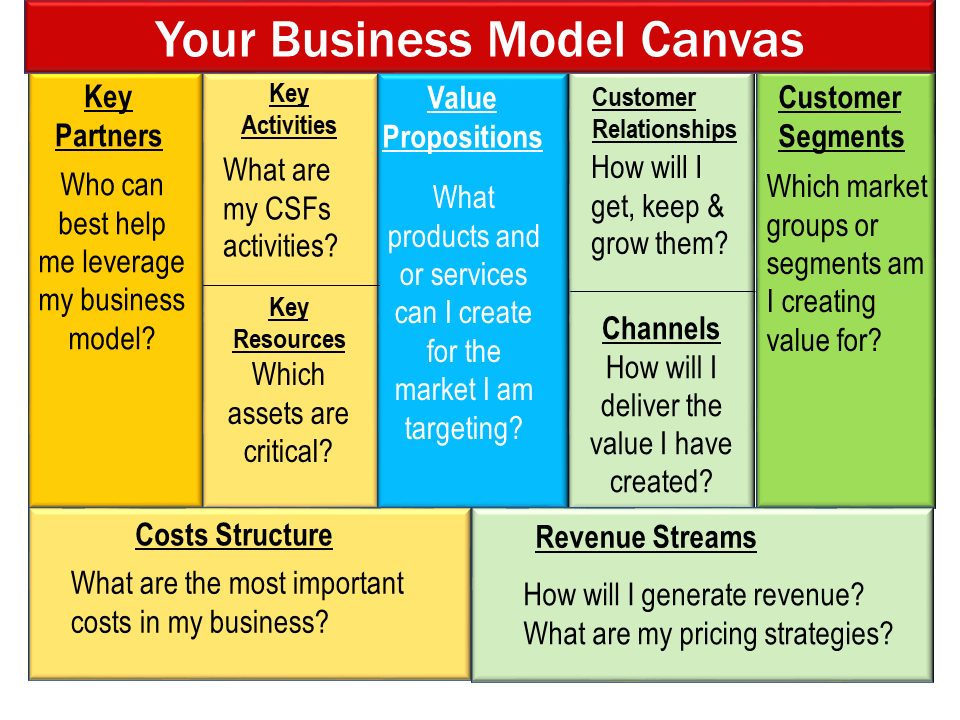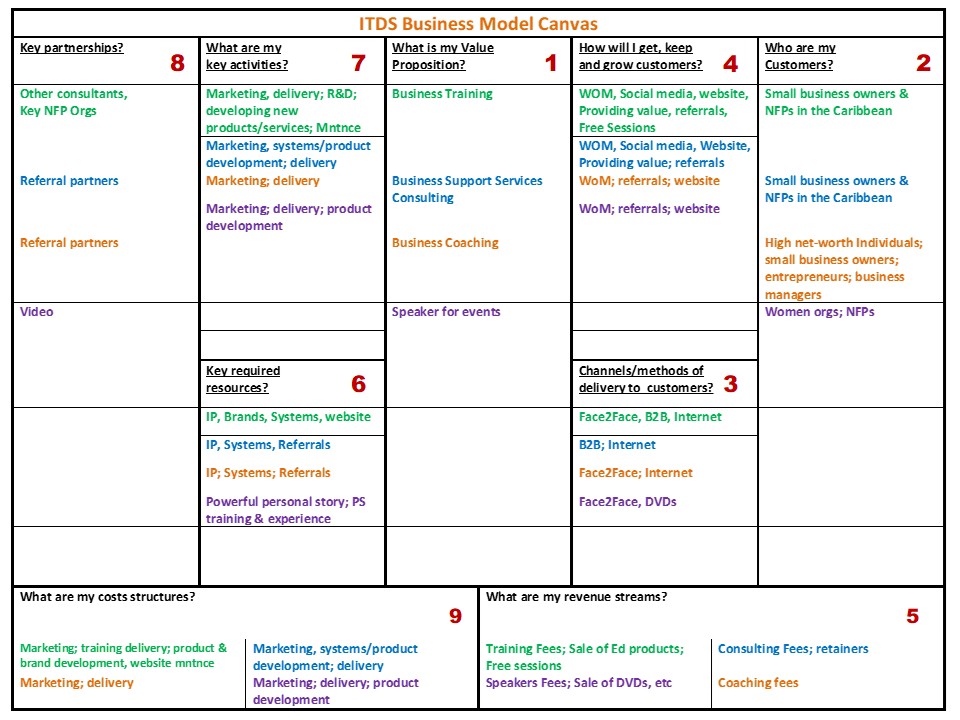How to Make Money With Your Business Model (includes Template)
- Home
- How to Make Money With Your Business Model (includes Template)

What is a Business Model?
No…I’m not playing 20 questions with you…I’m actually having a conversation with you and I really want you to answer…
As a matter of fact, a better question for you to answer is: What’s YOUR business model?
You’re not sure? And you’ve been in business how long?
Well, the painful truth is, we’re having this conversation because I’ve met too many Small Business Owners (SBOs), who either don’t know what’s a business model or what theirs could even look like.
And when I ask you about this, you hang your head in shame and mumble some silly answer, intending to make me look ignorant for asking.
I wasn’t just asking to practice my public speaking. And neither was I just networking.
When you don’t know your business model, at best you’re making a big mistake. At worst, you’re flirting with business suicide.
Well here’s a warning. I’m about to change that.
In this post, I’ll give you the lowdown on what it is and how you can use it to turn around your business fortunes. In particular, I’ll explain:
- What it is not
- What it is
- The benefits of knowing yours
- The Business Model Canvas (BMC)
- And how to use the BMC to develop your business model
Let’s jump right in.
Your Business Model is NOT…
1. Your business idea
Think of your business idea as the reason you started the business in the first place. It’s the reason you decided to offer that product or service in return for financial gain. Having the idea does not give clarity on how to make money with it.
2. Something you add as an afterthought
In other words, you don’t start it, run out and buy some stock, come back and pick at it just before you hire some staff. You have to be thinking about your business model even as you decide on your business idea.
So, the big question is…what the hell is a business model?
Your Business Model IS…
1. A Plan
One that clarifies how you will make money (profit) with your business idea.
The Business Model is a visual representation of how your business operates, how it makes money and how it intends to achieve it goals.
The model is made up of 9 key building blocks, drawn from the critical areas of your business. It is these building blocks that are arranged into your Business Model Canvas (BMC) and used to tell the financial story of your business.
For example, if you have an idea to make buses and sell to your local Transport Authority, your business model should let you know how you can (or won’t) make money with this idea.
2. An Indicator
Of if it’s worth investing in your business or not.
Not too long ago, when you were trying to get investment for your business, even for small sums, you were required to roll out a 5-lb business plan that landed on a desk with a resounding THUD! Somewhere in there was a business model.
However, in the last decade or so, these 5-lb plans became too cumbersome to respond to the fast-paced world of business and start-ups.
Therefore, the business model, in the form of a one-page business model canvas, has become the “indicator of worthiness” for businesses.
By now you’re wondering…
What are the benefits of having a business model?
There are many benefits to having a business model. Why don’t I share a few with you…
1. Increases your competitive advantage
Once you have a business model, trust me, you’re already ahead of many of your competitors. But this competitive advantage increases, when you use it to also help you respond quickly to business and economic situations.
2. Gets you investors and partners
When potential investors or partners can clearly see, and easily understand, how your business can make them a profit, they are soundly impressed. In this frame of mind, they are inclined to have very deep investment pockets.
3. Allows you to be financial over a longer period
Because a business model brings so much clarity to how you will make a profit, you’re likely to sustain a profit over a longer period. When this is the case, cash becomes available for savings and investments.
4. Streamlines processes
Using a business model canvas to represent your business model forces you to be very focused and helps you to streamline a number of processes.
Now you’re ready to find out…
What is a business model canvas (BMC)?

The BMC is a one-page picture version of your business model which you can use to keep you on track, sell your business to lenders, investors, partners, etc.
Remember I told you, a business model is made up of 9 key building blocks drawn from the critical areas of your business?
Well, the BMC presents your business model with the (external) customer blocks on the right along with the revenue streams. These are shades of green in the graphic.
The (internal) product or service blocks are on the left of the model along with the costs structure. These are colored in shades of yellow in the graphic.
The very important value proposition is in the centre of the canvas, colored blue and holding the internal and external sides together.
What makes the Business Model Canvas popular?
As a means of visually representing your business, here’s what make the BMC so popular:
- It fits on a single sheet of paper
- The logical structure is appealing
- It makes the business model easy to modify compared to a business plan
- It forces you to be clear on your value proposition
- The size of the business does not matter e.g. LEGO; GE, ITDS
- It works at any stage of growth in your business
Now for the meat of the matter…
How to place your building blocks on the BMC?
Now that you know what’s a business model and the benefit of having one, you’re now ready to place yours on the canvas.
If it’s okay with you, I’ll use examples from my own business so that you get a better idea how it works.
Grab your copy and follow along with me…
Start in the centre…
With your Value Proposition. It is a statement of the value you have created to solve the problems or address the needs your intended customers have. It is the most important block in your business model and everything else flows from it.
ITDS Example: A Mixed bundle of street-smart business & personal development solutions
Now move to the right
Customer Segments is the next block you will concentrate on. These are the groups or segments from your broader customer base that will get the most benefit from your value proposition.
If your customer base is small, it really is the entire base.
ITDS Example: Small Business Owners s & staff, Small Non-profit organisation and High Net-worth Individuals
Then you will deal with the Customer Relationships block. Here you will describe how you will acquire new customers and how you will turn them into repeat customers.
ITDS Example: To acquire: Referrals; to keep them: hand-holding and relevant solutions
Customer Channels is your next block. It helps you decide on the methods or channel through which you will deliver the value you have created for your customers. The important thing here is that the channels should have meaning for the customer.
ITDS Example: In person – one-on-one; in person – one-to-many; web tools
Revenue Streams is the last block on the right and the first of what can be considered as one of the foundation blocks. This is because all the customer blocks really lead to how you convert your value proposition into financial gain.
Essentially, the revenue streams answers the two big questions: How will I generate revenue? What are my pricing strategies?
ITDS Example: Coaching/consulting fees; public workshops fees; online programmes and products
Now you’re ready to move to the left or “internal” side
With the external or customers blocks you started on the outside and worked your way in. With the internal blocks on the left, you start on the inside and move outwards.
So you will start with Key Activities which can also be referred to as your critical success factors (CSFs). They are those things you do which will add the most value and which you must get right every time.
ITDS Example: Consulting; coaching; training; writing
The Key Resources block is the one that you will focus on next. These are those assets which you identify as critical to helping you to add the value you promised, while generating income from your customer segments.
ITDS Example: My Intellectual Property; my personal style; the Internet; my computers
Your Key Partners is the block you will focus on next. – These are the people, groups, organisations, etc who can really help you leverage your business model. When you identify and tap into your key partners, you reach more customers to grow your business, and by extension your income. .
ITDS Example: Fellow consultants; membership-based organisations like Small Business Associations; my Circle of Experience; service providers
Costs Structures is the final block for you to focus on when you complete the BMC. It is also the second of the supporting block. In this block, you identify the key costs in your business. This is important because spending on the wrong things could undermine your profits and sink your business.
ITDS Example: Key activities costs; my self-development costs; key business costs
Once you layout your business on its BMC, you will have the clarity and the focus to come up with any combination of business strategies to make or save money.
Your completed canvas should look something like this:

You, your business model and the future…
So…do you still think I’m making a capital mountain out of a business model molehill?
Even if you do, you cannot claim that I’ve not shown you that a business model is a proven financial plan for making or saving you money.
Listen, without leveraging your business model to make money, your attempts might be hit or miss. And depending on your market or niche, it can be more miss than hit.
But there is another reason above and beyond those that I’ve already shared, that makes ignoring your business model a costly mistake.
You see, technologies do not change businesses…business models do!
Look around you…how many big businesses around the world do you notice that are struggling to survive because of outdated business models?
How many new businesses do you notice have been created because of responsive ones? Uber, Airbnb, LegalZoom.com, Inc. are but a few.
My friend, with an outdated and inflexible business model, your business can die quietly in the dust of innovation and be swept aside by the sea of progress.
Is this a fitting reward for your blood, sweat and tears?
Is that the future you had in mind for your business?
If you answered “no” to these questions, then find the courage, the spine, the spunk to take your head out of the sinking sand and develop your business model. Then leverage the hell out of it to make you money!
Your business deserves no less.





